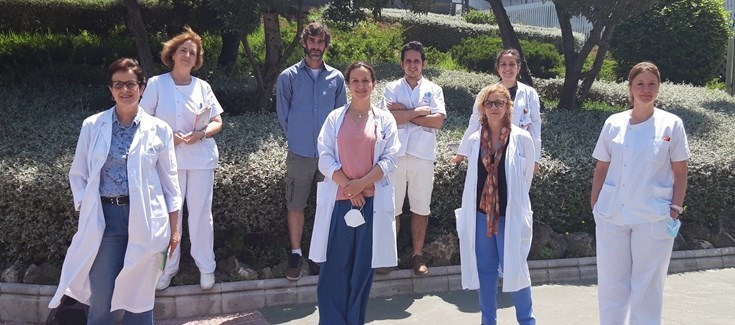Researchers from the U754 CIBERER led by María Teresa Caballero at the Hospital La Paz-IdiPAZ have described the pathogenic mechanism by which autoantibodies directed against the protein Perilipin-1 (PLIN1) cause acquired generalised lipodystrophy. In addition, they have validated the usefulness of these autoantibodies as a marker for the diagnosis and prognosis of this disease.
The causes of this pathology were largely unknown and its diagnosis was limited by the lack of diagnostic and prognostic biochemical markers to predict its development and severity. Previous studies by this research group had shown that these antibodies affect the normal functioning of adipocytes. The new work, published in the journal Diabetes, has described how the antibodies are able to enter the adipocyte, blocking a site relevant to PLIN1 for the regulation of lipolysis (lipid degradation).
The researchers have been able to recruit a total of 40 patients with the disease, one of the largest cohorts published to date.
This research has been coordinated by Margarita López Trascasa, former head of the U754 CIBERER group, and Fernando Corvillo, contracted from the CIBERER in this same team. This work has had the participation of clinical groups of worldwide relevance in the field of lipodystrophies, such as the group of Doctor David Araújo Vilar (Hospital Clínico Universitario de Santiago de Compostela), the group of Doctor Rebecca Brown (NIH) and the group of Doctor Ferruccio Santini (University Hospital of Pisa, Italy).
The U754 CIBERER line of research into lipodystrophies is part of the collaboration agreement between CIBERER and the International Association of Lipodystrophy Sufferers and Relatives (AELIP). The latter organisation of those affected is the one providing the funds for the scientific activity.
Acquired generalised lipodystrophy, also known as Lawrence syndrome, is characterised by the loss of adipose tissue during childhood or adolescence, affecting almost the entire body, preceded or followed by autoimmune manifestations in other organs. It is a syndrome with severe metabolic disturbances leading to increased cardiovascular risk. People with the disease also often suffer from severe hypertriglyceridaemia or hepatic steatosis. It is more common in women than in men with a ratio of 3 to 1.
Article reference:
Fernando Corvillo, Brent S. Abel, Alberto López-Lera, Giovanni Ceccarini, Silvia Magno, Ferruccio Santini, David Araújo-Vilar, Rebecca J. Brown, Pilar Nozal, Margarita López-Trascasa; Characterization and Clinical Association of Autoantibodies Against Perilipin 1 in Patients with Acquired Generalized Lipodystrophy. Diabetes 2022; db211086.
https://doi.org/10.2337/db21-1086
